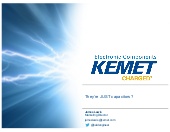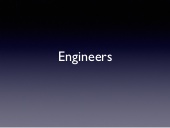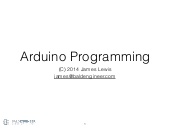Classic, vintage, or retro computer systems are well documented on sites like Wikipedia. Their historic position is well known. Their schematics are even published from original documentation. But how useful are those schematics in their current form? (Spoiler, not much.) Presented at KiCon 2019.
Download Slides (8mb)During #22 of the Hardware Developers Didactic Galactic meetup, I discussed Oscilloscopes. (Previously James talked about capacitors.) In the presentation, I broke down the internals of an oscilloscope. The presentation started off with a block diagram. Then I discussed the main components: vertical amplifier, A/D, memory controller, some of the computer side stuff, and the keynote was on triggering.
The trigger circuit of an oscilloscope fascinated me since very early in my HP/Agilent career. When I saw trigger modes like Pulse, Violation, Rise Time, and “Runt,” I thought: Wow, this must be the most complicated circuit in the scope! While it isn’t trivial, it very clever how just a few pieces of (relatively) simple hardware drive one of the most important aspects of a digital scope.
Download SlidesRick Altherr also gave an excellent talk on ECUs and their sensors. (I always thought ECU only meant engine control unit. His talk helped me understand why that isn’t really the case anymore!) It was great to learn about the combination of the engine mechanics with the electronics that control it. !)
See Rick’s SlidesHardware Developers Didactic Galactic is a group for hardware designers, hackers, and enthusiasts to discuss hardware-related topics. HDDG11 (or 0xb) featured a presentation from SnapEDA CEO on Footprints and my presentation on Capacitors.
Titled “They’re JUST capacitors?” I used content from my time as a KEMET Field Application Engineer.
Overview
In the presentation, I address the common myth or guideline: “capacitors should be derated 50%.” Comparing Aluminum, Ceramic, and Tantalum we discuss why each technology has a de-rating associated with it. Turns out, they all have different reasons to de-rate.
Additionally, I give a brief introduction to Supercapacitors. (You’ll note that it is spelled with one word…) The key to understanding what makes them “super” relies on how they achieve the common capacitor structure of electrode plate, dielectric, electrode plate.
Download PDF (11mb)Tools mentioned at the HDDG11 Presentation
- KEMET Catalog App for Mobile Devices
- Capacitor Simulator K-SIM
- KEMET Engineering Center (capacitor technical content)
- AddOhms Video Tutorials
Found this one while going through some old files. One of my favorite volunteering activities is introducing kids to engineering. After judging a FIRST competition, I learned about Central Texas Discover Engineering. They had a program that gave me a chance to spend an entire day talking to middle school kids about engineering.
I started the class with a simple question: “What do engineers do? Surprisingly, most of the kids answered pretty well. Then I went through these slides to give them an idea of other types of engineers. Lastly, we did a fun “engineering” activity.
When learning to use an Arduino, you have two things to learn: programming and hardware. In the past, I’ve taught some classes on how to program the Arduino. These are the slides I used to explain what the Arduino “Language” is, basic debugging concepts, how to use variables, and basic structures.






